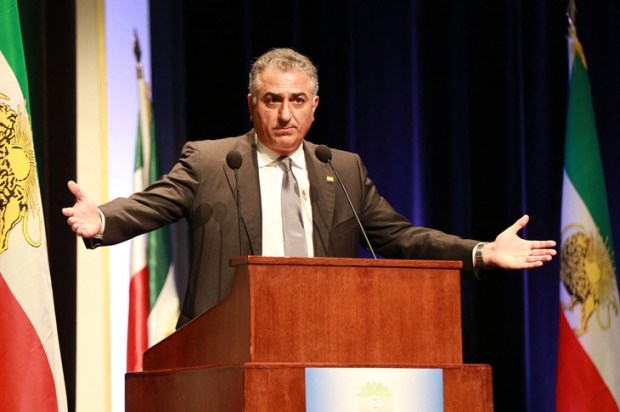Last year, a new Principal started at our children’s school. One of her first initiatives was to hold Wear It Purple Day in the high school – a decision that has had a knock-on effect at the school and in our family. Since then, the school has added other ‘rainbow’ days to the calendar, such as the International Day Against Homophobia, Biphobia, and Transphobia in May.
With Wear It Purple Day around the corner, it’s time for us parents to inform ourselves and, if we have concerns, to speak up!
What is the aim of these days?
Rainbow days were founded in response to concerns about the mental health of young people who might be questioning their sexuality and gender identity. In the words of the event organisers, Wear It Purple day aims to:
- Advocate for and empower rainbow young people
- Celebrate and promote the value of diversity and inclusion in all community settings
- Raise awareness about sexuality, sex, and gender identity and challenge harmful social cultures
- Champion rainbow role models to help young people establish the confidence to be who they are
Schools might mark these days in a number of ways, including changes to the uniform, fun activities, special assemblies, and targeted lesson content.
Is holding a ‘rainbow’ day the best way to help children?
We live in a society where waving the rainbow flag is seen as a harmless – even necessary – expression of solidarity with people who have previously been marginalised, maligned, and mistreated. Choosing not to wave (or wear) the rainbow flag is therefore interpreted as an expression of ‘phobia’, bigotry, or hatred towards those people.
But it’s not as simple as that.
When it comes to children and young people, the real question is, ‘What is the best way to help young people develop a healthy view of sexuality and gender?’ And for a number of reasons, I’m not sure that a whole-school ‘rainbow’ day is the answer.
It can undermine the parent–child relationship
Sex and gender are sensitive topics that should be addressed primarily within the context of the family. Parents should be free to discuss these issues with their children from within their own cultural, religious, and moral frame of reference. When schools start ‘raising awareness’ about sexuality, sex, and gender from a progressive viewpoint, it puts parents on the back foot, especially if they haven’t been notified in advance.
Sexuality and gender are also complex issues. Children and young people need the guidance of the people who know and love them best – their parents. Young people who are struggling with their sexuality and gender are often struggling with poor mental health as well. Parents may be able to see the bigger picture and support their children in a more holistic way.
Organisations such as Wear It Purple have a rather black-and-white understanding of the role of parents: if parents don’t wholeheartedly and unconditionally affirm their child’s expression of sexuality or gender straight away, then school teachers and counsellors are obliged to step in, even without parents’ knowledge or consent.
It puts sexuality at the centre of identity
‘Rainbow’ days put sexual and gender expression at the very heart of a person’s self-concept. But being gay or straight, trans or ‘cis’ is not the primary way many parents want their kids to define themselves. Who they are is so much more, encompassing the whole breadth of their personality, interests, strengths, experiences, and relationships!
When young people define themselves primarily by their sexuality or gender identity, they may start to believe that their life will only be fulfilling if they can express those things. But life is about far more than sex! As a Christian, I believe that the person who lived the most fulfilled human life, Jesus, did so without ever experiencing a romantic relationship.
There are many different reasons that children can face bullying at school: their clothing, physical appearance, ethnicity, academic achievements, disability or diagnosis, vaccination status … perhaps schools should strive to become supportive communities where no one is bullied, rather than singling out one particular group.
It encourages children to label themselves before they’re ready
According to the Wear It Purple organisation, you’re either a ‘rainbow’ kid or you’re not. But how can children as young as 12 be expected to have certainty about their sexuality (or indeed anything else)? Children in high school are still developing their sense of who they are and how they feel about others.
During adolescence, a young person’s brain begins a process of growth and development that won’t be fully complete until their mid-20s. The part of the brain that’s responsible for thinking through the consequences of actions is still immature, so teenagers often rely on the emotional, impulsive part of their brain to make decisions. It seems unwise to push children to label themselves publicly when so much of their identity is still in flux.
It promotes radical gender ideology
Wear It Purple and similar organisations use diagrams such as the ‘Genderbread Person’ to teach children that the sex of their body might have no relationship to their gender identity and that sex is not binary, but a spectrum.
Teaching these beliefs promotes exaggerated gender stereotypes in the place of simple biology. Radical gender ideology encourages children to believe that if they experience an incongruence between their psychological gender identity and biological sex, then it is their body that has to change. In my opinion, this is the opposite of ‘body positivity’: it encourages children to despise and reject their God-given bodies, rather than learn to love them.
It could contribute to a social fad
It is no secret that there has been a staggering increase in gender dysphoria among young people (especially girls) that has experts questioning the role of social media in what appears to be, at least in part, a social fad. Those who have investigated the phenomenon, such as Dr Lisa Littman and journalist Abigail Shrier (author of Irreversible Damage: the Transgender Craze Seducing Our Daughters), are convinced that this is partly the result of social contagion among peer groups and social media networks.
If children are taught from a young age to question their gender, then it’s not surprising that many of them will become confused. If kids keep telling each other that all their problems will be solved by ‘changing’ genders, then of course, many will start diagnosing themselves with gender dysphoria.
This is borne out by a study conducted by the Gender Service at Westmead Children’s Hospital in Sydney. The study’s authors conclude that ‘the children and families who came to the clinic had clear, preformed expectations: most often, children and families wanted a diagnosis of gender dysphoria to be provided or confirmed, together with referral to endocrinology services to pursue medical treatment of gender dysphoria … It was our impression that these expectations had been shaped by the dominant sociopolitical discourse’.
It promotes an ‘affirmation only’ model of care
Organisations like Wear It Purple believe that the only way to help children who experience gender incongruence is immediate, unqualified affirmation.
The clinicians at the Westmead Gender Service explain why this can be unhelpful:
[I]nsofar as the gender affirmative model is taken as equivalent to medical intervention, clinicians (including ourselves) who work in gender services are coming under increasing pressure to put aside their own holistic (biopsychosocial) model of care, and to compromise their own ethical standards, by engaging in a tick-the-box treatment process. Such an approach does not adequately address a broad range of psychological, family, and social issues and puts patients at risk of adverse future outcomes and clinicians at risk of future legal action.
By contrast, when parents and clinicians take a cautious ‘wait and watch’ approach, at least 80 per cent of children find that their gender dysphoria resolves by adulthood (Trans: When Ideology Meets Reality by Helen Joyce, pp. 43, 80–1).
It introduces children to mature content online
The Wear It Purple blog publishes various stories from ‘rainbow’ young people. For example, one of them describes a young person’s decision to have ‘top surgery’, which even includes an ‘after’ photo.
This kind of online content – only a few clicks away – is not necessarily suitable for children, especially without the support and guidance of their parents.
It undermines true diversity of thought and belief
At our children’s school, there were families from many different religious backgrounds including Christians, Muslims, Buddhists, and Hindus. In general, these faith groups hold conservative views about marriage, sex, and gender. Other parents who are not religious may still be socially conservative on these issues.
Holding ‘rainbow’ days privileges one particular view of sex and gender above others and undermines the true diversity of belief within the school community. It disrespects and alienates parents with differing viewpoints, especially when it’s done without their knowledge or consent. If a school requires all students to wear purple or make another outward display of support on the day, it marginalises those who might choose not to participate.
Speak up with compassion and truth
If we oppose ‘rainbow’ days ‘for the sake of the children’, then we need to be sure to show compassion to those very children wherever we might come across them, even if the way they present themselves makes us feel uncomfortable.
At the same time, we shouldn’t be afraid to speak the truth. We can reject radical gender ideology without rejecting the young people who are caught up in it. We speak the truth because we care about those children: we know that ‘changing’ their gender and their body won’t bring them true fulfilment.
It’s vital that we talk these issues through with our own children very carefully. Our children are growing up in a world that sees this as a simple choice between love and hate. But these are complex issues that require a lot of discussion. It may take some time to help our children understand our views and concerns, but we must keep building a strong relationship of love and mutual respect and keep the conversation going.
When we see these days coming up on the school calendar, it’s important to meet with the school leadership and/or event organisers. We can discuss some of the above concerns and explain our family’s beliefs. We could suggest an alternative celebration of diversity that doesn’t require students to affirm something that contradicts their values and beliefs. When we did this at our children’s school, other parents were grateful for our advocacy.
Whatever we choose to do, we can’t let ourselves be bullied into silence. This issue is too important; there is too much at stake. One thing’s for sure: we’ll never help our struggling young people if we cut their parents out of the equation. So parents, it’s time to speak up!

























